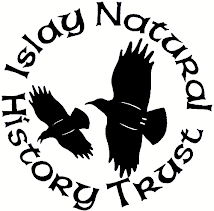Highlands and Islands Enterprise (HIE) has appointed the infrastructure, support services and construction group, Robertson to deliver phase one of the European Marine Science Park at Dunstaffnage, near Oban.
Frank Reid, Regional Managing Director for Robertson said “Robertson are delighted to have been awarded the contract to build this prestigious Science Park building, and we look forward to working in partnership with HIE over the next year.”
The development will include 20,000 sq ft of laboratory and office space in a high-specification sustainable building in a stunning location, aimed at supporting Scotland’s growing Life Science sector and supporting up to around 125 jobs.
Situated adjacent to the Scottish Association for Marine Science (SAMS), it is anticipated that the Science Park will be particularly attractive to start-up businesses, spin-outs and SMEs interested in the combination of an outstanding marine environment and world-class scientific expertise on hand. First-class business support will be available to tenants from HIE and Scottish Development International (SDI).
Douglas Cowan, Area Manager for Highlands and Islands Enterprise, said “HIE is delighted that work is set to begin on the site. Argyll and the Islands already has a strong reputation in the Life Sciences sector, with businesses such as GlycoMar Ltd and Aquapharm Biodiscovery Ltd, occupying laboratory space at Dunstaffnage and achieving international recognition for cutting edge research and development work."
“The Scottish Association for Marine Science at Dunstaffnage is one of the UK’s leading marine research institutes with around 140 staff, and is a founding partner of the University of the Highlands and Islands. Existing and new businesses located in the Science Park will benefit from the proximity of world leading research and facilities on their doorstep, together with tailored business support from both HIE and SDI.”
“Argyll’s marine resource is a fantastic asset, and is particularly well placed to exploit once in a generation opportunities in marine life science activity and in renewable energy. The construction of the Science Park is designed to act as a catalyst for these growing sectoral opportunities.”
In August 2010, the HIE Board approved an investment of £7.5m to create the first phase of the Science Park on the site next to SAMS at Dunstaffnage. HIE will contribute £4.5m of its own grant-in-aid budget from the Scottish Government, and has attracted the remaining £3m towards this first phase from the European Regional Development Fund (ERDF).
 |
| Computer generated graphic of Marine Science Park |


































































